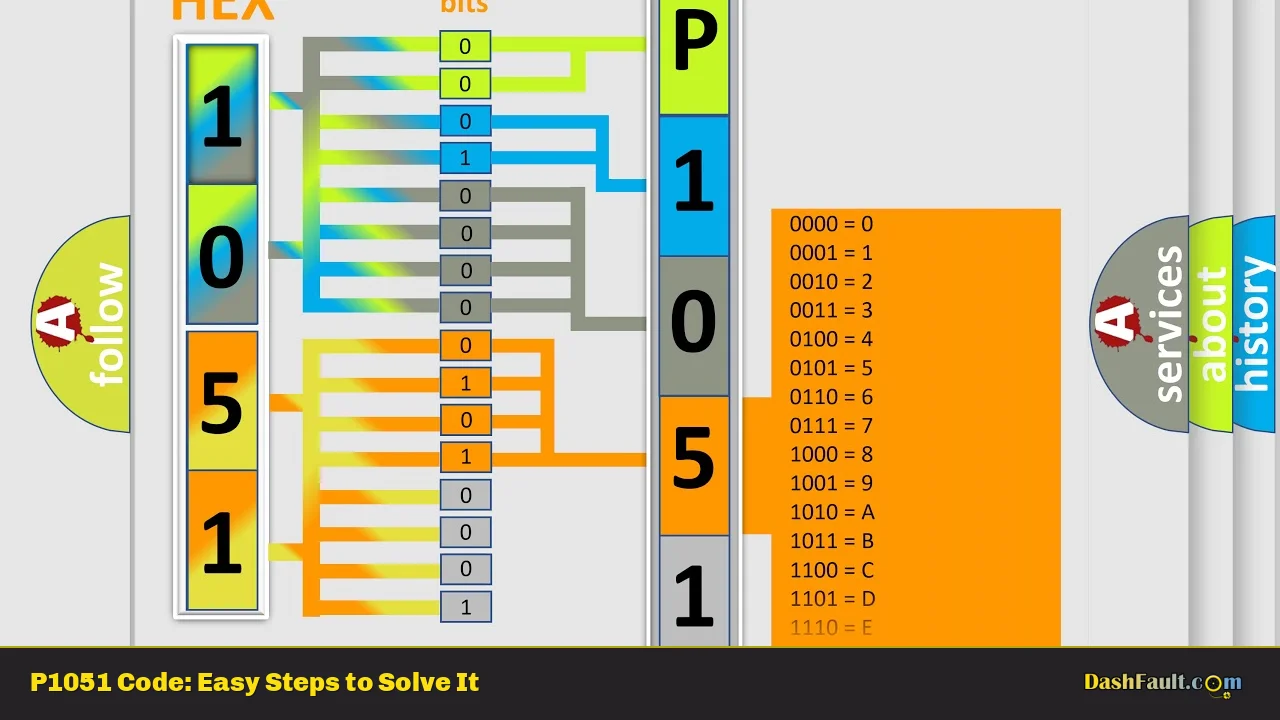The P1051 trouble code is a diagnostic trouble code (DTC) that indicates an issue with the Air Fuel Ratio (A/F) sensor heater circuit on Bank 2 of the engine. This code is part of the OBD-II system that monitors the performance of the vehicle’s emissions control system. When the engine control module (ECM) detects a malfunction in the heater circuit of the A/F sensor, it triggers the P1051 code, which can lead to poor engine performance, increased emissions, and potential damage to the catalytic converter if not addressed promptly.
| P1051 Code Meaning | P1051 Code Common Causes |
|---|---|
| A/F Sensor 1 Heater Control Circuit Low (Bank 2) | Faulty A/F sensor heater |
| Low voltage detected in the heater circuit | Damaged wiring or connectors |
| Malfunctioning ECM | Blown fuses related to A/F sensor |
| Sensor installation issues | Corrosion or moisture in connectors |
Symptoms
When dealing with a P1051 code, you may notice several symptoms indicating that your vehicle requires attention:
- Check Engine Light: The most common symptom is the illumination of the check engine light on your dashboard.
- Poor Fuel Efficiency: You might experience reduced fuel economy due to improper air-fuel mixture adjustments.
- Rough Idling: The engine may run roughly or stall during idle conditions.
- Increased Emissions: A malfunctioning A/F sensor can lead to higher emissions, potentially causing your vehicle to fail an emissions test.
Technical Explanations
The P1051 code specifically refers to a problem with the heater circuit of the A/F sensor located on Bank 2. The A/F sensor plays a crucial role in measuring the air-fuel mixture entering the engine. It contains a heating element that ensures it operates at optimal temperatures for accurate readings. When this heater circuit malfunctions, it can result in incorrect data being sent to the ECM, leading to performance issues.
The ECM monitors the voltage and current flowing through the heater circuit. If it detects a low voltage condition, it triggers the P1051 code. This could be due to various factors such as damaged wiring, a faulty sensor, or issues within the ECM itself.
Step-by-Step Diagnosis
To diagnose a P1051 trouble code effectively, follow these steps:
- Scan for Codes: Use an OBD-II scanner to confirm that P1051 is present and check for any related codes (like P1031 or P1168).
- Visual Inspection: Inspect the A/F sensor and its wiring harness for any visible signs of damage, corrosion, or loose connections.
- Check Fuses: Verify that all relevant fuses related to the A/F sensor are intact and functioning properly.
- Test Voltage: With a multimeter, check for voltage at the A/F sensor connector while the ignition is in the “ON” position. You should see approximately 12 volts.
- Resistance Check: Measure resistance across the heater element terminals of the A/F sensor. Compare this reading with manufacturer specifications; if it’s outside normal ranges, replace the sensor.
- ECM Inspection: If all else checks out, consider testing or replacing the ECM if it’s suspected to be faulty.
Solution Methods
Resolving a P1051 trouble code typically involves one or more of these solutions:
- Replace A/F Sensor: If diagnostics indicate that the A/F sensor is faulty, replacing it will often resolve the issue.
- Repair Wiring Issues: If damaged wiring or connectors are found during inspection, repair or replace them as necessary.
- Check and Replace Fuses: Ensure all relevant fuses are operational; replace any blown fuses that are associated with the A/F sensor circuit.
- ECM Replacement or Reprogramming: If all other components are functioning correctly but problems persist, consider professional help for ECM testing or replacement.
Cost Estimates
The cost of repairs related to a P1051 code can vary significantly based on several factors:
- A/F Sensor Replacement: Typically ranges from $150 to $300 for parts and labor.
- Wiring Repairs: Depending on severity, costs may range from $50 to $200.
- ECM Replacement: This can be quite expensive, ranging from $500 to $1500 depending on vehicle make and model.
Warnings and Recommendations
- Professional Help: If you are not comfortable diagnosing or repairing electrical components in your vehicle, seek assistance from a qualified mechanic.
- Avoid Overlooking Symptoms: Ignoring a P1051 code can lead to more significant engine problems and increased repair costs down the line.
- Regular Maintenance Checks: Regularly inspect your vehicle’s sensors and wiring during maintenance checks to prevent future issues.
Frequently Asked Questions About P1051
- What does P1051 mean?
P1051 indicates a low voltage condition in the heater control circuit of Air Fuel Ratio Sensor 1 on Bank 2. - What are common symptoms of a P1051 code?
Common symptoms include poor fuel efficiency, rough idling, and illumination of the check engine light. - Can I drive my car with a P1051 code?
While driving is permitted, it’s advisable to address this issue promptly to prevent further damage. - How do I fix a P1051 code?
Fixing involves checking and possibly replacing the A/F sensor, repairing wiring issues, or replacing blown fuses. - Is there any risk if I ignore this code?
Ignoring this code can lead to increased emissions and potential damage to other components like catalytic converters. - How much does it cost to repair a P1051?
The cost can range from $150 for sensor replacement up to $1500 for ECM replacement. - What tools do I need for diagnosis?
You will need an OBD-II scanner and a multimeter for effective diagnosis. - When should I seek professional help?
If you’re unsure about performing diagnostics or repairs safely, it’s best to consult with a professional mechanic.
In conclusion, understanding and addressing a P1051 trouble code is essential for maintaining vehicle performance and compliance with emission standards. By following proper diagnostic procedures and being aware of potential symptoms and solutions, vehicle owners can effectively manage this issue while ensuring their vehicle runs smoothly and efficiently.
